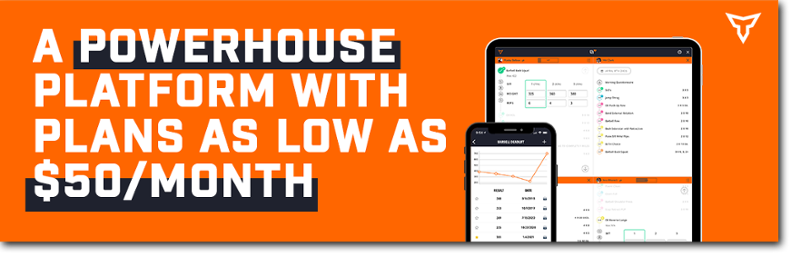10 Tips to Simplify Summer Training - Strategic Exercises
Tip 1: Andrew Papirio, CSCS (Football):
Although summer training may provide the opportunity for the most comprehensive and robust program of the year, the drawback is that athletes may no longer be on site with you. Make sure that your summer program accounts for the diverse access that athletes will have to equipment, gyms, fields, and other facilities. Be strategic with the exercises that comprise your program. Provide alternative options for completing certain exercises so that athletes with limited equipment can modify their programs effectively. Also, be aware of the flow of your training sessions.
Most programs require proximity of a variety of equipment and space. For example, an athlete’s access to strength training equipment may be far away from the field where they are able to do their speed training or conditioning. It is probably unrealistic to expect your athlete to travel between both locations within one session. Be creative but do not compromise your program. Choose exercises that are feasible for athletes to do away from campus and segment the flow of training sessions accordingly. Be sure to always provide options for those who may be confined to their residence
Tip 2: Maura Bergan, Ph.D., CSCS (Softball):
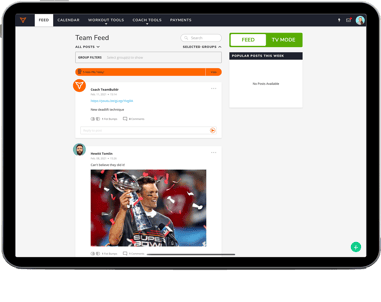
Keep summer programming simple, set student-athletes up for success! Sessions should be efficient yet effective. As you program, keep access to equipment and space in mind, everyone’s scenario is different. Provide a variety of implements or alternatives for movements. Find creative ways to embed accountability to support completion and motivation. TeamBuildr is a great platform for that - use photos, leaderboards, or group chats! Many student-athletes are training alone but thrive with the encouragement and support of their teammates. Summer is the time to lay the foundation for the academic year!
Tip 3: Brian Thompson - Ph.D., ATC, CSCS*D, RSCC*E, Pn1 - Director of Strength and Conditioning (Wrestling):
Be as flexible as possible with your training schedule. Some athletes may have highly physically demanding jobs such as construction and landscaping while some may just hang out at the beach all summer. Some may prefer to train on certain days while some prefer others. I have learned over the years to avoid weekend training, give them time to rest and enjoy the summer. Providing some autonomy by giving choices in the program will allow all athletes to get the most out of the program. Be willing to provide a menu-based program so each movement can be completed regardless of equipment availability. For example, you may give them a choice between hang clean, weighted jump squat, and box jump. Lastly, do not add any exercises you haven’t had them do previously and personally coached them on.
Tip 4: Logan Fletcher, CSCS, PN1, USAW (Baseball, Field Hockey, Track & Field):
Utilize videos in summer programs to relay information to your student-athletes. A video of you as a coach explaining the details of a drill or training session can provide the athletes with a better understanding of the program. Every exercise in your exercise library can easily be linked to a video that the student-athlete can access on the fly during a training session. Video can also be uploaded onto the team feed by the coach or student-athlete. This is a fantastic way for the student-athletes to keep each other accountable, stay connected over breaks, and show off any PR’s. TeamBuildr provides a user-friendly platform for video integration allowing the student-athlete to receive the best program possible and acts as an accountability tool for teams to use.
Tip 5: Aaron Matthias, CSCS, USAW, FMS (Track and Field, Women’s Volleyball, Men’s Lacrosse):
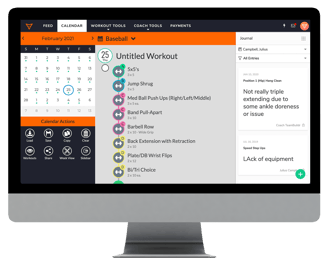
Use the tools available to create a diverse and engaging program. With everything that TeamBuildr includes, there are many ways to engage with the athletes using it over the summer. Adding variations to the exercise selections, optional extra work to choose from, utilizing the leaderboard to challenge teams while they may be apart for the summer are all examples of ways to personalize the usage of TeamBuildr to best accommodate team needs.
Tip 6: Dylan Brown - CSCS (Men’s Soccer, Men’s/Women’s Tennis):
Make the most out of your summer training by forming healthy and sustainable habits in your training. Consistently training at a certain time of day can help establish good habits not only in terms of training, but also nutrition and sleep. Take advantage of less academic stress and slowly change your schedule to benefit you long term in your training. For example, training in the morning can help establish a consistent circadian rhythm through changes in body temperature and light exposure. This in turn has an impact on mood, metabolism and overall energy levels to devote to training. Quality training goes far beyond sets and reps, and summer is a great time to optimize your schedule for a huge return on investment.
Tip 7: Jake Eglintine, CSCS, FMS 1 (Football, Women’s Lacrosse, Men’s Basketball, Men’s Gymnastics):
Don’t forget about recovery throughout the summer. The summer is a great time to focus on training for the upcoming season or transition into training again from a spring season. It is important to take advantage of the extra time you have without school to do the extra things that can make a huge difference. With that being said, recovery should be a huge focus of the extra work that gets done. Foam rolling, stretching, pool workouts, and light walks are a great way to promote recovery that can be very beneficial for your next workout. TeamBuildr has a great section on the app that allows coaches to post documents and links to extra work and oftentimes this is where you can find all types of recovery options. TeamBuildr also allows the athletes to interact with themselves and with the coaches which makes doing the extra things that much easier with a little motivation from your peers and coaches.
Tip 8: Nicole Jimenez, CSCS (Women’s Basketball, Women’s Soccer, Diving, Women’s Gymnastics):
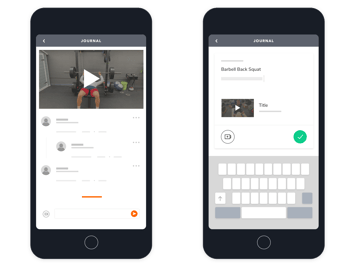
Be creative with how you engage the athletes throughout the summer, whether it is through competition or having them send videos of the exercises they complete. Find ways to keep them accountable or how they could keep each other accountable throughout the summer. Make sure, of course, to keep in mind the NCAA rules and regulations as well as when it comes to teams that are in the off-season. Also, TeamBuildr has a team feed that allows the athletes to share videos or leave comments to each other, the same as it is on Facebook. On the team feed you can leave encouraging quotes and notes for the athletes. This allows you to engage with the athletes at a different level and lets them know you are there for any questions or concerns they may have. Lastly, do not forget the athletes who are injured. Be mindful of the things they can and cannot do and try to make the most of the exercise training program for them.
Tip 9: Adam Feit, Ph.D., CSCS, SCCC, PN2 - Coordinator of Physical and Mental Performance
During the school year, it’s easy to say things like, “I wish I could do more. I just don’t have the time.” Well, now you do. Think of all the areas you wish you could have addressed before, during, and after your team workouts. Consider topics like nutrition, mindset, and recovery. Rather than sending another packet of information on top of another packet of workouts, microdose the information through a schedule over the summer. Come up with themes like #MINDSETMonday, #POWERFOODSFriday, or #STRETCH2WINSaturday. Schedule out pre-written and/or recorded messages, tips, or strategies that you can add to each daily or weekly workout. Just as we would progressively overload a training program, think about different ways you can slowly build up their capacity to do a little bit better in these areas over an entire summer program. By the end of 8-12 weeks, you’ll have not just a stronger, more resilient athlete, but also, one who has progressively worked on the skills of high-performance nutrition, mindset, and recovery.
Tip 10: Mary Kate Feit, Ph.D., CSCS, SCCC, PN2 - Associate Director of Strength and Conditioning
Don’t forget about your sport coach! As strength and conditioning coaches, we always need to balance what we want the team to do with the priorities of the sport coaches. What fitness test will the team be completing? What KPIs are important to the coach? How many days per week does the coach think they should be training? These are all important questions to answer before finalizing your summer program. Finding the balance between what you know is the best practice in strength and conditioning and what your coach wants is crucial for not only the coach's buy-in but also the buy-in of your athletes. Also, is your coach sending any sport-specific technique work home with the team? If yes, how can you complement this? For example, make sure you schedule speed and agility drills on the same day that the players have skill work. The compliance of your athletes will increase substantially if they only need to go to one location per day. How is your sport coach delivering the material? Are they flexible with this delivery? Adding the sport-specific technique work to your TeamBuildr account through posted documents can really simplify the process for the athletes!
Subscribe to our blog
Subscribe to receive the latest blog posts to your inbox every week.
Related posts

The Academic Calendar: An Underrated Training Tool
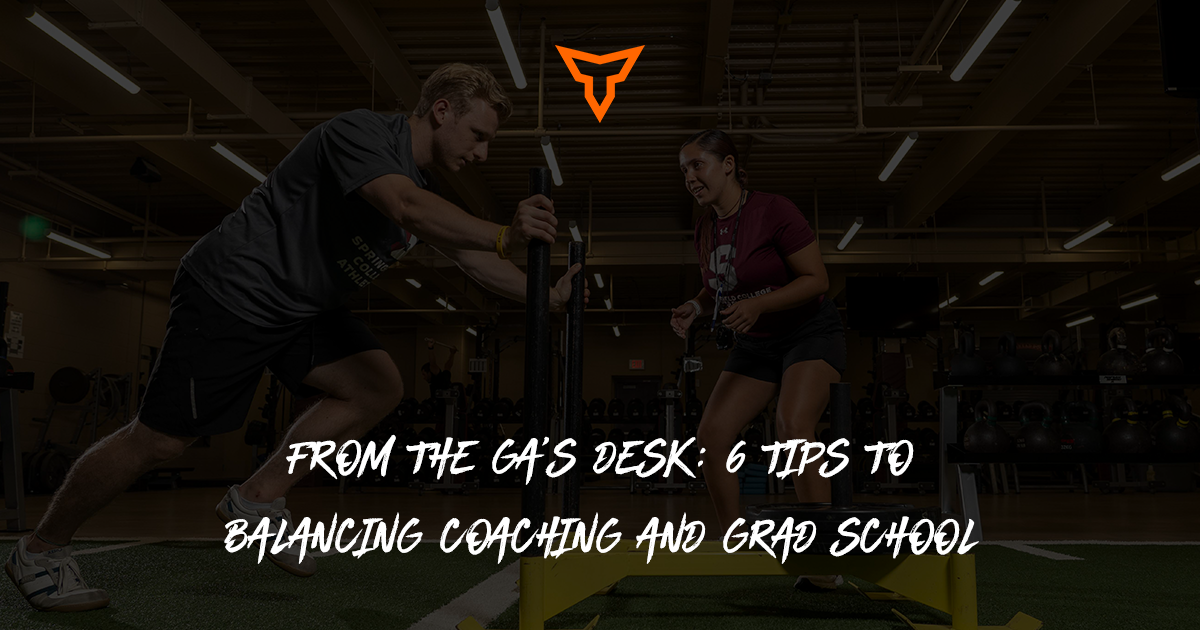
From the GA's Desk: 6 Tips to Balancing Coaching and Grad School


